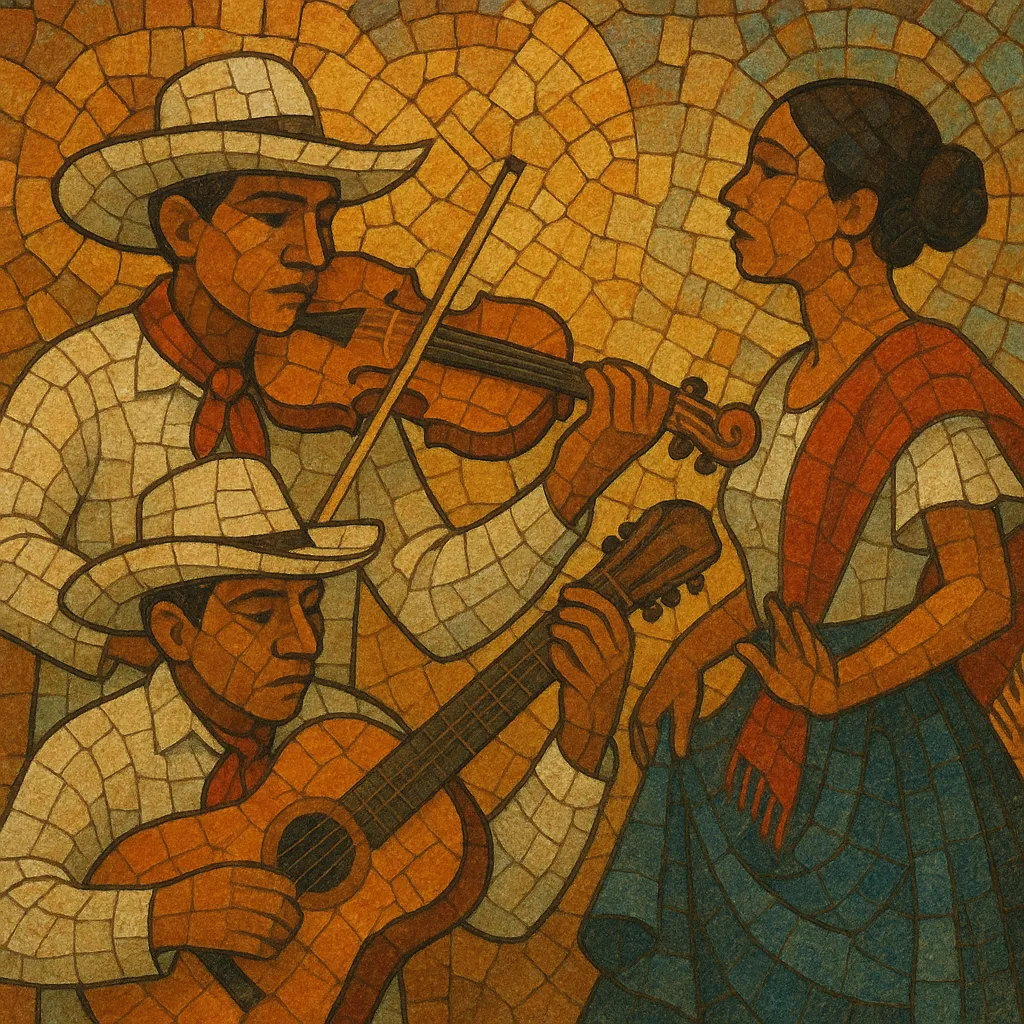Son huasteco (also known as huapango huasteco) is a traditional folk style from the Huasteca region of northeastern Mexico. It is performed by the trío huasteco: a virtuosic lead violin, a five‑course jarana huasteca (small rhythm guitar), and a deep‑voiced guitarra quinta huapanguera (eight‑string guitar). The style is marked by agile violin improvisation, bright strummed rhythms, and distinctive falsetto singing.
Rhythmically, it pivots on sesquiáltera (the interplay of 6/8 and 3/4), which powers both the music and the zapateado dance on a wooden platform (tarima). Verses often use octosyllabic lines and can include improvised coplas that reference love, nature, regional pride, and playful duels in song. While festive and driving, the music also carries a lyrical, romantic tone.
Son huasteco emerged in the Huasteca region (spanning parts of Hidalgo, San Luis Potosí, Veracruz, Tamaulipas, Querétaro, and Puebla) during the 19th century, with roots reaching back to the late colonial era. It crystallized from encounters between Spanish song-dance forms (like the fandango and copla traditions), Indigenous musical practices of the Teenek (Huastec) and Nahua peoples, and broader mestizo rural dance gatherings. The name huapango is commonly linked to the Nahuatl "cuauhpanco" (“on top of the wood”), referencing the dance platform used for zapateado.
By the late 19th and early 20th centuries, the standard ensemble—lead violin, jarana huasteca, and guitarra quinta huapanguera—became defined. The violin’s ornamented passages and improvisations, combined with the jarana’s brisk strums and the huapanguera’s resonant bass and counter‑rhythms, set the genre’s signature sound. Falsetto vocals added a soaring, expressive quality that distinguished the style from other regional sones.
From the 1930s onward, radio and commercial recordings helped spread son huasteco beyond local fiestas, projecting it to urban audiences while maintaining its strong community dance function. Celebrated ensembles toured nationally, and the repertory of emblematic sones (such as El Querreque, El Cielito Lindo Huasteco, La Azucena, and La Petenera Huasteca) gained wide recognition.
Since the late 20th century, festivals like the Festival de la Huasteca have supported transmission, documentation, and innovation. Migrant communities in Mexico City and the United States sustain active scenes, teaching younger generations violin technique, verse improvisation, and zapateado. Today, son huasteco thrives in both community contexts and professional stages, remaining a living tradition while engaging with new audiences.


